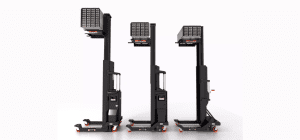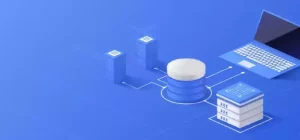

Data Center power consumption has long been a concern of budget-conscious IT managers. Today, the continued rapid growth of data center capacity has brought greater scrutiny by policymakers, environmental groups, and customers. Business executives are championing sustainability initiatives to not only reduce costs but meet corporate social responsibility objectives.
Sustainability begins with maximizing operational efficiency, and that requires measurement. Organizations are looking to better monitor power consumption so that they can take steps to improve efficiency.
Customers that have equipment hosted in colocation facilities also see the need to monitor power consumption — albeit for different reasons. In many cases, customers pay a fixed price for a committed amount of power per cage of equipment. They may be charged for 200kW but suspect they’re only using half that amount. By monitoring power, they can determine whether to switch to metered billing or consolidate equipment into fewer cages.
However, many organizations lack the infrastructure needed to properly measure power consumption. Rahi has partnered with Packet Power to offer a means of monitoring power usage while minimizing costs and operational disruption.
Increasingly, data center facilities are using metered power distribution units (PDUs) to monitor power. These rackmount units provide information on voltage, current, active power, apparent power, energy, and power factor. High-quality metered PDUs comply with the ISO/IEC 62053-21 standard and provide billing-grade accuracy.
Power data can be measured at the PDU level or at individual outlets. It helps administrators gain a better understanding of power usage so they can take steps to increase efficiency at the device or rack level. Metered PDUs can also be used to allocate power costs to specific user groups, projects, departments, or business units.
“Smart” PDUs have a network interface that enables data center managers to monitor these metrics remotely. They can also be integrated with data center infrastructure management (DCIM) software and environmental monitoring solutions.
However, replacing legacy PDUs with smart units can be a costly and labor-intensive operation. Packet Power solution allows us to put a device inline between the branch circuit and the rack-level PDU or power strip and obtain real-time power readings. Installing the device takes only a few minutes.
Packet Power also offers solutions that enable us to measure power at the individual device level. This is ideal for lab environments that need to understand the power consumption of prototype devices.
Packet Power’s devices have secure, built-in wireless communications, eliminating the need for a data cable. Administrators can access the data via SNMP, Modbus, Ethernet/IP, MTConnect, or Power Packet’s EMX monitoring software. The data can be accessed through a dashboard or delivered to other applications through APIs.
Systems are made to order and shipped ready to install, cutting electricians’ costs in half. Packet Power’s solutions are designed for retrofit, fitting inline, side-by-side, DIN-mounted, or ad hoc electrical panels from any vendor. A variety of models are available, enabling customers to purchase only the monitoring they need.
Rahi’s data center infrastructure experts can help you determine if it makes more sense to upgrade your PDUs or go with a retrofit solution. If you decide to retrofit, we will work with Packet Power to develop your solution then handle the installation. Let us help you implement a power monitoring system that helps you get a handle on costs and drive your sustainability initiatives.
Bill has been in the IT industry for nearly 30 years. For the past 20 years, he has been specializing in data center operations, including presales and engineering. In particular, Bill has spent the last 12 years focusing on data center infrastructure management (DCIM) and other monitoring-related technologies.

For years, data center power and cooling requirements remained relatively stable, enabling organizations to plan for...

Money, identities, books, art, movies, appliances, medical devices, automobiles… it seems as though there’s a...

Data centers are experiencing rapid growth to meet the burgeoning demand for processing power and storage capacity....

Once thought to be “nice to haves”, data center infrastructure management (DCIM) tools have become essential to...

Although businesses continue to migrate more applications and services to the cloud, most also need to maintain a...

As the costs of building and maintaining an on-premises data center continue to escalate, more and more organizations...

Traditionally, organizations build data centers from the ground up by installing cabinets and racks and then adding...

Unplanned network outages due to natural disasters, system failures, cyberthreats, or human error are on the rise,...

Fremont, Calif. — June 22, 2017 — Rahi Systems announced today a partner agreement with Daxten, a leading...

Despite predictions of its impending demise, the U.S. on-premise data center market remains healthy. More than half of...

While most discussions of IT security focus on logical controls, protection of the physical data center infrastructure...

Outdated or obsolete applications make up nearly a third of the typical organization’s software portfolio,...

Traditionally, data centers have had power distribution systems purpose-built by electricians. However, custom...

More and more organizations are choosing to get out of the data center business and partner with a colocation provider...

Most organizations had to rush to shift to work-from-home models. Now, they’re taking a more strategic approach to...

OVHcloud Data Center Fire in France In March 2021, OVHcloud’s five-story, 5,400-square-foot SBG2 data center in...

Why is Workspace Utilization Analysis more important now than ever before? Organizations need to understand how many...

In today’s rapidly-changing environment, it is paramount for businesses to be swiftly able to connect and...

Blockchain technology has revolutionized the data that would have been difficult to predict a few years ago. What...

The internet has come a long way since its inception in the early 90s. Beginning from fetching information for...

Phishing has become a rage in the threat actors' community to start exploiting people. While the technique isn’t...

For years, data center power and cooling requirements remained relatively stable, enabling organizations to plan...
Let our experts design, develop, deploy and manage your requirements while you focus on what's important for your business
Please check your inbox for more details.
| Cookie | Duration | Description |
|---|---|---|
| cookielawinfo-checkbox-analytics | 11 months | This cookie is set by GDPR Cookie Consent plugin. The cookie is used to store the user consent for the cookies in the category "Analytics". |
| cookielawinfo-checkbox-functional | 11 months | The cookie is set by GDPR cookie consent to record the user consent for the cookies in the category "Functional". |
| cookielawinfo-checkbox-necessary | 11 months | This cookie is set by GDPR Cookie Consent plugin. The cookies is used to store the user consent for the cookies in the category "Necessary". |
| cookielawinfo-checkbox-others | 11 months | This cookie is set by GDPR Cookie Consent plugin. The cookie is used to store the user consent for the cookies in the category "Other. |
| cookielawinfo-checkbox-performance | 11 months | This cookie is set by GDPR Cookie Consent plugin. The cookie is used to store the user consent for the cookies in the category "Performance". |
| viewed_cookie_policy | 11 months | The cookie is set by the GDPR Cookie Consent plugin and is used to store whether or not user has consented to the use of cookies. It does not store any personal data. |
